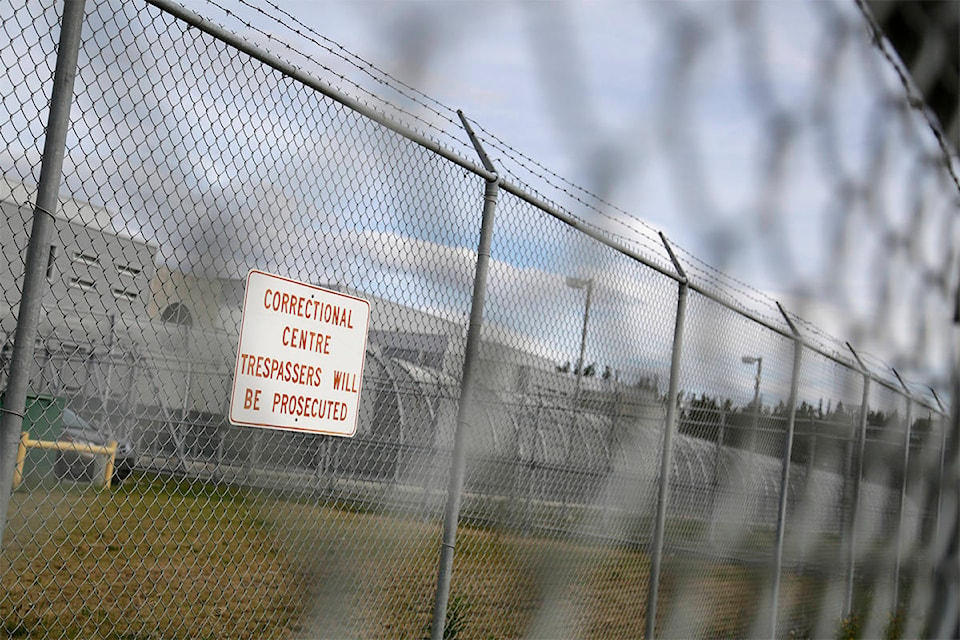The Yukon government has tabled proposed amendments to the Corrections Act, which officials says will bring greater structure and guidance to operations at the Whitehorse Correctional Centre, particularly around the use of segregation.
A lawyer who represented a former inmate who brought a landmark case against jail officials, though, says the proposed amendments lack teeth.
Acting justice minister John Streicker tabled Bill No. 6, Act to Amend the Corrections Act, 2009, in the legislative assembly Oct. 8.
The Corrections Act sets up a legal framework on how corrections facilities in the territory must be run (currently, there’s only one — the Whitehorse Correctional Centre, or WCC). Many of the proposed amendments deal with the use of separating inmates from general population.
Among the proposed changes are the creation of definitions for “segregation” and “restrictive confinement” based on how much time an inmate is deprived of meaningful social interaction instead of their physical locations within the jail.
“Restrictive confinement” is defined as “any type of custody where an inmate’s association with other persons is significantly restricted” for at least 18 hours per day, and up to 22. “Segregation” has the same definition, except that the inmate is under those conditions for 22 hours or more.
The bill also proposes limits on how long inmates may spend in segregation, under what conditions segregation would be inappropriate, and allowing for the appointment of independent adjudicators to review the circumstances under which inmates are kept in segregation or restrictive confinement.
In an interview Oct. 17, director of corrections Andrea Monteiro said that work on the amendments began after a legal expert, David Loukidelis, conducted an independent inspection of the WCC in 2018 and produced a report containing 40 recommendations.
Once the amendments are enacted, the Department of Justice will then develop associated regulations and policies to “operationalize” the changes.
“For the staff working at the institution and the inmates, what this will equate to is a safer environment for the staff and the inmates by having us be able to appropriately house people based on their individualized needs,” she said.
The department is already training and educating staff on how the changes may affect operations on the ground, Monteiro said, and has began “fleshing out” the creation of “alternate units” in the jail.
Monteiro said the amendments also address concerns that inmates may be placed in segregation-like conditions in a unit by a different name.
“By ensuring that in the legislation we’re defining segregation and we’re defining restrictive confinement and then making sure that we actually have appropriate internal and external review processes … that’s how we’re going to ensure that we have this matrix of accountability and oversight to ensure that people are not placed in conditions that amount to segregation but are called something else,” she said.
However, Whitehorse criminal defence lawyer Vincent Larochelle was skeptical of what impact the proposed amendments would have at the WCC, if any.
Larochelle represented former WCC inmate Darryl Sheepway, who brought a petition against WCC officials over how the jail uses its secure living unit (SLU), in which Sheepway was kept for the vast majority of his time at the WCC.
Yukon Supreme Court Justice Ron Veale found earlier this year that the WCC did not have the legal authority to create the SLU, which he concluded was separate confinement by a different name. He gave the WCC nine months to address the issues.
“There are no genuine amendments being made to the Corrections Act, other than perhaps the review mechanism, but the whole part of the amendments dealing with restrictive confinement, segregation, that’s just the government continuing its lexical war that it lost in court,” Larochelle said in an interview Oct. 17.
“So they’re trying now to do what they weren’t able to do in court, which is to re-define what segregation means and what solitary confinement means and if it needs to be done again, we’ll do it again, but they’re going to lose again. They can’t do what they’re trying to do.”
“I think government is still playing semantics,” he continued. “… In one sentence, I think that Bill No. 6, Act to Amend the Corrections Act 2009, does not display on behalf of the Government of the Yukon, and genuine and clear intention to stop the routine use of segregation at the Whitehorse Correctional Centre, period.”
Larochelle said he thinks the WCC is taking a “top-down” approach when it should be taking a “bottom-up” approach, and working to change the culture and work environment at the jail.
“They don’t need a 10-page law. They need to change their philosophy, they need to change their view,” he said.
In an emailed response, Department of Justice spokesperson Fiona Azizaj said that the proposed amendments are just “one piece of the solution” when it comes to dealing with segregation. She added that the department is “confident that the proposed amendments address the Sheepway decision.”
Contact Jackie Hong at jackie.hong@yukon-news.com
Correction: An earlier version of this story incorrectly stated Bill No. 6 received its second reading Oct. 17. In fact, while the bill is in the second reading stage, it has not yet received a second reading. The News regrets the error.
